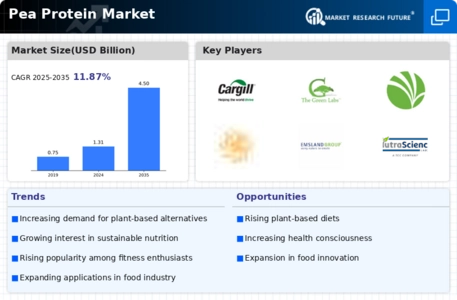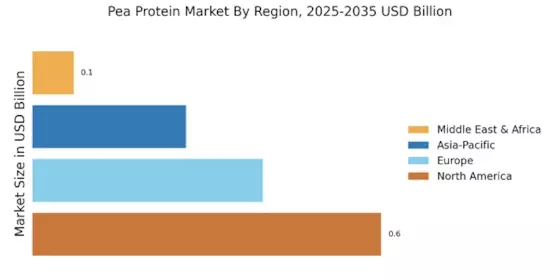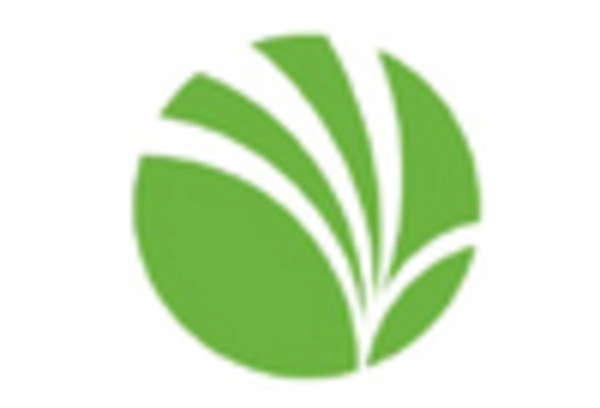The Pea Protein Market is gaining momentum as a key player in the realm of plant-based protein alternatives. With the increasing consumer demand for vegetarian and vegan options, coupled with a rising awareness regarding health and wellness, the competitive landscape is evolving rapidly.
The market is characterized by innovations in production techniques, a wide variety of product offerings, and strategic partnerships among key players.
Companies are increasingly focusing on product development to meet diverse consumer preferences, fueling competition and market dynamics.
Manufacturers are becoming more adept at sourcing high-quality peas and optimizing extraction processes, which enhances their market positioning. Additionally, sustainability trends and the clean label movement are driving brands to enhance transparency in their sourcing and production methods.
As a result, businesses within this space must navigate a landscape filled with both established companies and emerging startups, each striving to capture market share and satisfy consumer demand for plant-based protein solutions.
Roquette Freres stands out in the Pea Protein Market with a strong commitment to innovation and quality. The company has established itself as a leading producer of plant-based proteins, emphasizing its extensive research and development capabilities.
Roquette Freres has a robust portfolio that includes a variety of pea protein products tailored for food and beverage applications, making it a go-to choice for food manufacturers seeking high-quality ingredients.
The company benefits from a global presence, with distribution capabilities that ensure consistent product availability across regions.
Its strengths lie not only in the superior quality of its pea protein but also in its sustainable practices, such as efficient sourcing, which resonates with eco-conscious consumers.
The company’s focus on enhancing consumer experiences through innovative solutions positions it favorably in a competitive market landscape.
Natural Nutrition, focusing specifically on the Pea Protein Market, has made significant strides in developing a range of plant-based protein products aimed at health and wellness-oriented consumers. This company offers a variety of pea protein formulations, catering to diverse dietary needs, including sports nutrition and general health supplements.
Natural Nutrition has a commendable market presence, bolstered by its dedication to producing high-quality, non-GMO pea protein that aligns with consumer preferences for clean and transparent labels.
Throughout its journey, the company has engaged in strategic partnerships and alliances that have expanded its product offerings and market reach, while also pursuing mergers and acquisitions to enhance its portfolio.
The strengths of Natural Nutrition lie in its ability to innovate and adapt to market trends, ensuring that its product lines remain relevant and appealing to a broad audience.
With a firm footing in the global market, the company continues to capitalize on the growth of plant-based dietary preferences while reinforcing its commitment to quality and sustainability.


















Leave a Comment